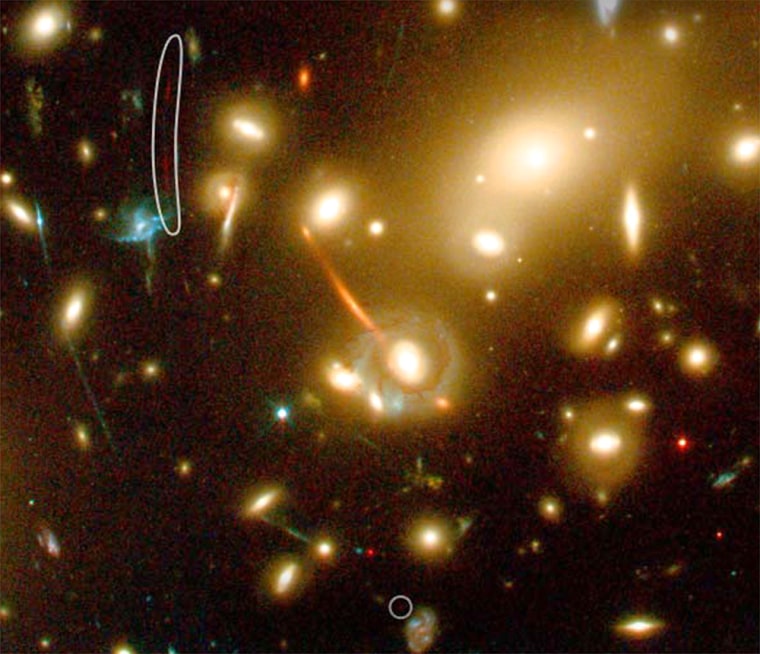In a discovery that offers a rare glimpse back to when the universe was just 750 million years old, a team of astrophysicists said Sunday they have detected a tiny galaxy that is the farthest known object from Earth.
“We are confident it is the most distant known object,” California Institute of Technology astronomer Richard Ellis said of the galaxy, which lies roughly 13 billion light-years from Earth. Put another way, the light traveled for 13 billion years to reach Earth.
The team uncovered the faint galaxy using two of the most powerful telescopes — one in space, the other in Hawaii — aided by the natural magnification provided by a massive cluster of galaxies. The gravitational tug of the cluster, called Abell 2218, deflects the light of the distant galaxy and magnifies it many times over.
The magnification process, first proposed by Albert Einstein and known as “gravitational lensing,” produces double images of the galaxy.
“Without the magnification of 25 afforded by the foreground cluster, this early object could simply not have been identified or studied in any detail with presently available telescopes,” said astronomer Jean-Paul Kneib, of Caltech and the Observatoire Midi-Pyrenees in France.
End of the Dark Ages
The discovery gives a rare glimpse of the time when the first stars and galaxies began to blink on, ending a period that cosmologists call the Dark Ages, said Robert Kirshner, an astronomer with the Harvard-Smithsonian Center for Astrophysics in Cambridge, Mass.
“The possibility is here we really are beginning to peek into that time,” said Kirshner, who was not connected with the discovery. “People have gone there in their imagination — they’ve thought about it. Now we are getting the facts.”
The Hubble Space Telescope revealed the first glimpse of the galaxy, backed up by observations made with the Keck Observatory’s 10-meter telescopes atop Mauna Kea.
The galaxy is just 2,000 light-years across. That’s far smaller than the Milky Way, which is roughly 100,000 light-years in diameter.
Were the stars the same?
Cosmologists have predicted that early galaxies contained stars that were different from the ones that came into being much later in the history of the universe. But the astrophysicists’ analysis suggests that the type of massive stars the galaxy contains were common after the end of the Dark Ages, Ellis said.
“That’s very interesting if it’s true,” Kirshner said.
No one knows how long the Dark Ages lasted in the wake of the Big Bang 13.7 billion years ago.
Word of the discovery came during the annual meeting of the American Association for the Advancement of Science in Seattle. Further details appear in a forthcoming issue of the Astrophysical Journal.
